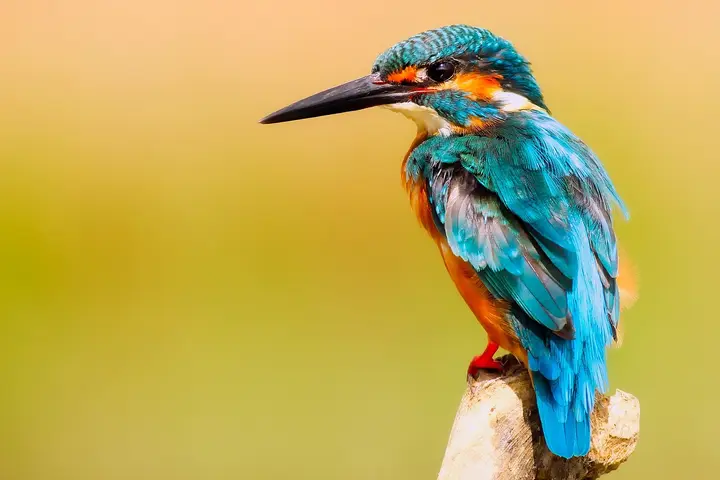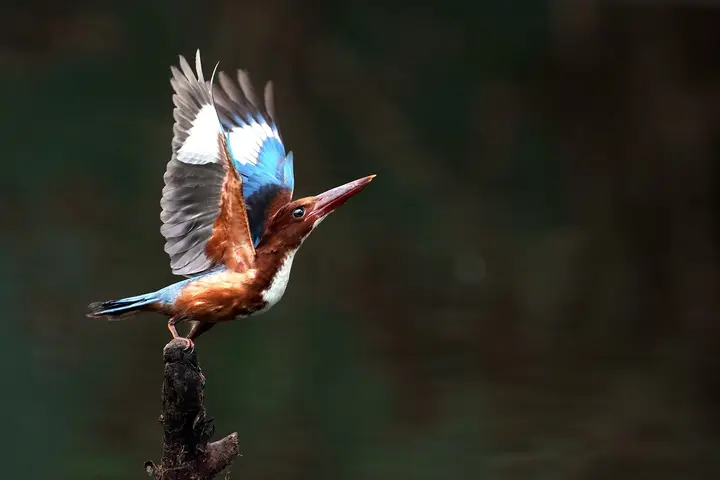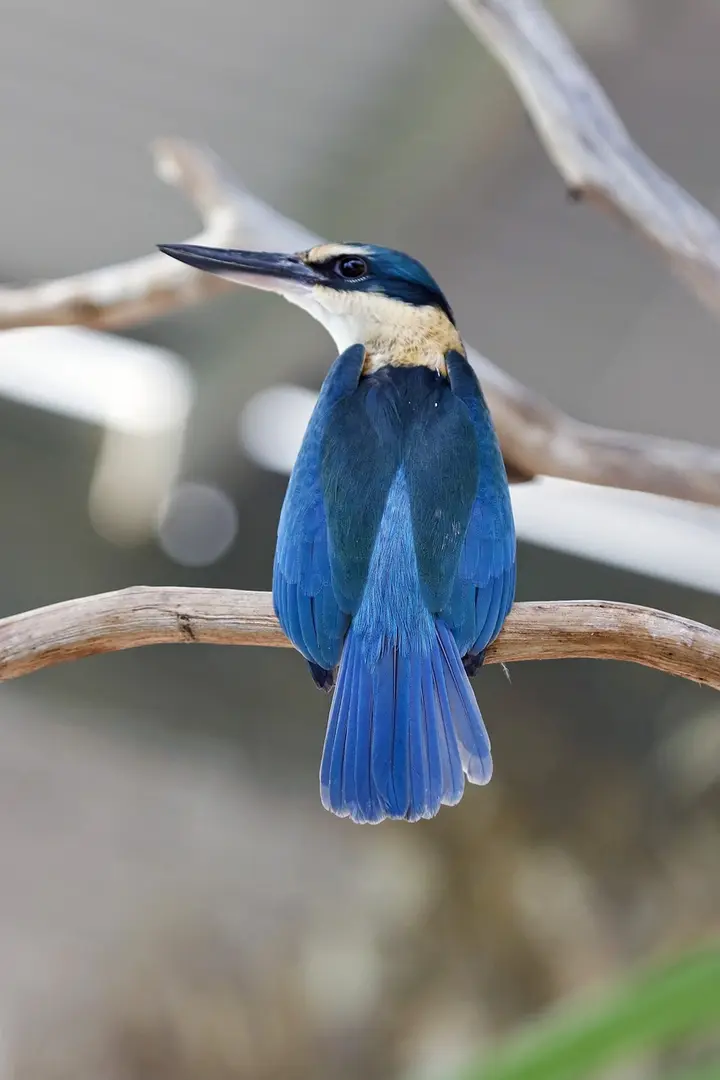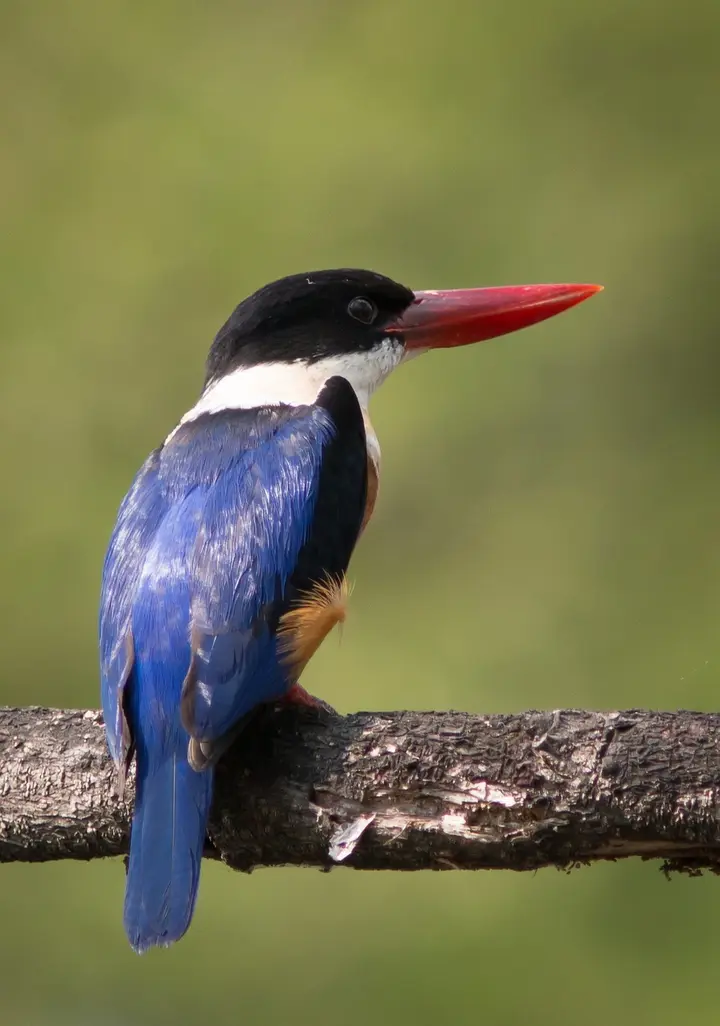Colored feathers of village birds: the role of feathers in attraction and camouflage

In ancient times, deep in dense forests, charming birds and real sultans live on the throne of colors. They are villages, rare and incredibly attractive. When it soars in the sky, its magnificent feathers swing and are colored in the colors of the rainbow, ready to drown everyone's eyes with its beauty. So, get into a secret world where degradation grows and wonders form, and discover how these magnificent birds live and how their colorful feathers express their strength and attractiveness.
Show key points
- The vibrant plumage of village birds and kingfishers plays a vital role in attracting mates and enhancing reproductive success.
- Bright feathers also serve as camouflage in natural environments, allowing birds to blend in and avoid predators.
- The coloration of kingfisher feathers changes during mating season, becoming more vivid to signal strength and maturity.
- ADVERTISEMENT
- These birds face threats from environmental changes, pollution, and harsh winters, which directly affect their survival and breeding habits.
- Kingfishers are expert hunters, using specialized techniques and adaptations to catch fish and other prey efficiently.
- Scientific studies have revealed that feather color not only attracts mates but also serves as a form of communication and species identification.
- The diverse and striking colors of kingfisher feathers symbolize nature's complexity and highlight the need for environmental protection and further research.
Village birds are one of the wonderful species that is distinguished by the beauty of their colorful plumage. These birds have many bright colors and attractive designs on their plumage, which has attracted the attention of many researchers and bird lovers. Scientific studies have shown that the colorful feathers of village birds carry an important role in attracting the right partner and stimulating attention and discrimination between individuals. But beauty is not the only role of this colorful feathers, it also plays an important role in camouflage and survival in the natural environment.
Recommend

In the dense forest, huge pine trees dot their tangled branches. Every corner of this magical world comes to life, including the kingfisher with its charming and colorful feathers. The color of their feathers has become a language of attraction and affects their ability to attract the right partner.
When the kingfisher flies towards the wide horizon, its feathers take on different colors to express the splendor of its bird and attract the attention of others. Its plumage may be a glorious bright color, resembling a dazzling rainbow, or it may be a muted, light color, leaning towards a mixture of brown and green tones. This variety of colors allows the bird to merge into its surroundings while attracting attention.
During the mating season, the feathers of the kingfisher become the scene of a dazzling display of colors and arrangement. He began to update the colors of his plumage and make them more prominent with the aim of attracting potential peers. The colours are enhanced, becoming brighter and brighter, and their shapes accentuate the bird's beauty, reflecting its strength and maturity. It's a stunning show with vivid details and vibrant colors that arouse curiosity and admiration for everyone who watches it.
However, kingfishermen should be careful when using bright colors, because there are many enemies and predators in the forest waiting at every step. So he must have the ability to adapt to his environment and try to hide his presence so that he enjoys protection and safety.
Kingfisher feathers are more than just a beautiful splash of colour, they are a language the bird uses to attract a suitable companion and camouflage itself when needed. Let's think about the splendor and details of this wonderful world, and learn from the Kali bird how to express ourselves in the most beautiful colors and attract beauty.
1. Employing bright colors to attract the ideal partner

The common kingfisher, also known as a fish dog, fish lion, fish tiger, emerald, and fisherman, is one of the birds under the Buddhist, Dharma, and Buddhist system. Named after the kingfisher in 1758, Swedish naturalist Carl Linnaeus is widespread along the waters of three continents in Europe, Asia and Africa, feeding mainly on fish. There are currently 7 subspecies of the common kingfisher, the smallest kingfisher in the world and one of the most famous members of the kingfisher family.
The common kingfisher is the only kingfisher found in most parts of Europe and is a resident of warmer regions, while migrating south during the winter at higher latitudes. Its appearance is distinctly blue, green and orange, with a ruby blue stripe on the back. Males and females can be distinguished by the color of the lower beak: males are black like the upper beak, while females are red in color. This bird can easily be confused with many other kingfisher species, but it is usually distinguished by its orange stripes on its eyes and the feathers of its ears. They are perfectly adapted to diving, have specialized optical structures that allow them to clearly see prey underwater, and can even penetrate thin ice to catch prey.
2. Feather patterns and their influence on the attractiveness of the bird for the same species

This type of bird is usually monogamous, digging its nests along riverbeds to breed offspring, each time laying about 5-7 eggs, hatching after 19-21 days and leaving the nest after 24-27 days. On a cultural level, the common kingfisher appears in mythology and artistic creations related to both Eastern and Western cultures, and has a certain degree of positive connotation. However, the numbers of these kingfishers are gradually declining due to their need for water quality and coastal environment, as well as their lack of tolerance to harsh winters. However, they are still numerous and widespread.
Kingfishers live mainly around water at medium and low altitudes (about less than 243 meters above sea level), such as flat rivers, streams, ponds, lakes, canals, canals, fish ponds and even reservoirs. However, this bird prefers small, medium-sized rivers that are clear and gentle flowing, providing sufficient habitat for appropriately sized fish, as well as habitats for reeds, papyrus and shrubs with prominent branches. It can be found at an altitude of up to 1500 meters above sea level (some say it can reach 1830 meters above sea level). But during the winter no-breeding season, when they are affected by the freezing of most inland freshwater, they are forced to migrate to coastal areas and survive in saltwater lakes, estuaries, harbors and protected rocky beaches.
In the tropics of Southeast Asia, the common kingfisher faces competition from many similar species and can be found in mangrove streams, wetlands and swamps, and can also be found in large gardens. Even in Europe, where competition is low, this kingfisher hunts quietly in garden ponds.
3. Methods of colored feathers for camouflage and protection

This bird feeds mainly on fish, and at least 60% of the food observed by fishermen in various places is fish. They also feed on crustaceans such as shrimp, aquatic insects, amphibians such as frogs, slugs, small reptiles or berries and reeds of some buttercup and elder plants. The largest prey is fish with a length of about 12-12.5 cm. During winter observation, the kingfisher eats between 13 to 21 small fish per day, which means that it needs to successfully dive about 38 times to get 46 grams of food, which can account for 50-60% of its total body weight. In Kashmir, the local fisherman hunts between 10-12 a.m. and 17-19 p.m., avoiding the main catch times for white-breasted emeralds and spotted fish, but this phenomenon has not been observed in Malaysia. The kingfisher vomits several times a day small grains of indigestible fish bones and insect residues.
Non-fish foods include crustaceans (freshwater jambers, lobsters, lobsters, and lobsters) and aquatic insects (flies, butterflies, moths, water lilies, crayfish, and may fly). They are also some species of the genus Orchid and Newt. But these non-fish organisms seem to be the result of birds misunderstanding species as fish, rather than eating them in the first place.
This species of bird usually feeds on shallow water, often standing at a height of 1-2 meters or at a fixed point in the air, waiting for opportunities to move. When hunting, they will decide how to catch prey based on its location: either catch it directly on the surface of the water or dive into the water to catch it, however, the selected prey is usually not more than 25 cm below the surface of the water, and prefer prey that is easy to catch. In the latter case, the kingfisher pulls its wings back to flow its body into the water to reduce resistance, uses its RF membrane to protect its eyes, and after catching the fish, it will flap its wings once or twice to take advantage of its own buoyancy, fly vertically out of the water and return to shore. The fish is usually beaten on a branch, stone or floor, and then the fish loses consciousness before being swallowed from the head or fed to young birds.
4. The influence of the environment on the development of colors in the feathers of village birds

The average kingfisher has fewer natural enemies at puberty, but domestic cats and mice in some areas will still pose a threat to it, while European badgers and red foxes will prey on their nests. Because this bird is aggressive, and although terrestrial predators such as snakes may also attack small birds, they can also play a certain protective role. The most deadly threat for them is the bitter cold in winter. When these harsh conditions persist and cause shallow inland waters to freeze, the risk of their survival will increase. In the UK, the common kingfisher suffered the harshest winters in 1962 and 1963, which for some time led to its total disappearance in some areas, while in others its number decreased by up to 90%. It can take years for residents to recover from a harsh winter. But there are also opinions that due to the large number of children (at least twins), the impact may not be so serious.
This bird is also very sensitive to changes in rivers. Industrial waste and agriculture-related materials flow into the water in which the kingfisher lives, and rivers are artificially converted or developed into dams or bank protection, which seriously affects their ability to build nests and breed offspring. In order to protect fish resources, ordinary fishermen have been persecuted in some areas. The decline in the numbers of the common kingfisher since the seventies has often been attributed to river pollution, and their presence has become a good indicator of the quality of the river.
Since the common kingfisher occupies a higher ecological status (a high-level consumer of fish of prey), it has been confirmed that PCBs will accumulate in the body of the average kingfisher and cause biomagnification, in addition to mercury, HEOD and DDE. It was found that they accumulated in the bodies of kingfishers.
Other current causes of death include traffic accidents, window collisions, and human intervention. In the past, there was persecution from hunters, and feathers were used to provide hunting bait and to satisfy fashion trends, but this is almost non-existent now.
In addition to harsh winters for young birds, flooding or bad weather in summer can make adult birds unable to provide food and starve to death. Only half of the larvae live more than a week or two, and only a quarter of the larvae survive until the next breeding season (78-79% of individuals die); only a quarter of adult birds of individuals survive the winter (-71-71). 73% of individuals die)
5. The importance of scientific studies in understanding the role of colored feathers of village birds

The colorful plumage of kingfishers is the key to their success in the wild. Diverse colors and beautiful combinations create irresistible charm, with a focus on strength, health and sustainability. Feathers also play an important role in attracting a partner and achieving sexual success. It's really amazing how nature and the geometry of the universe work together to disperse the colors of shrimp feathers to create a captivating, beautiful and memorable scene. Let's celebrate the diversity, splendor and beauty of life embodied in the feathers of the kingfisher.
In conclusion, it can be said that the feathers of village birds are a crucial element in their lives, due to their importance in attracting a partner, communication between individuals, camouflage and survival. Scientific studies on this subject contribute to a deeper understanding of the mechanisms of this amazing phenomenon and have creative benefits in many areas. Therefore, researchers and scientists must continue to study this field and share knowledge to fully understand the role of colorful feathers of village birds and their profound impact on the environment and biodiversity.








